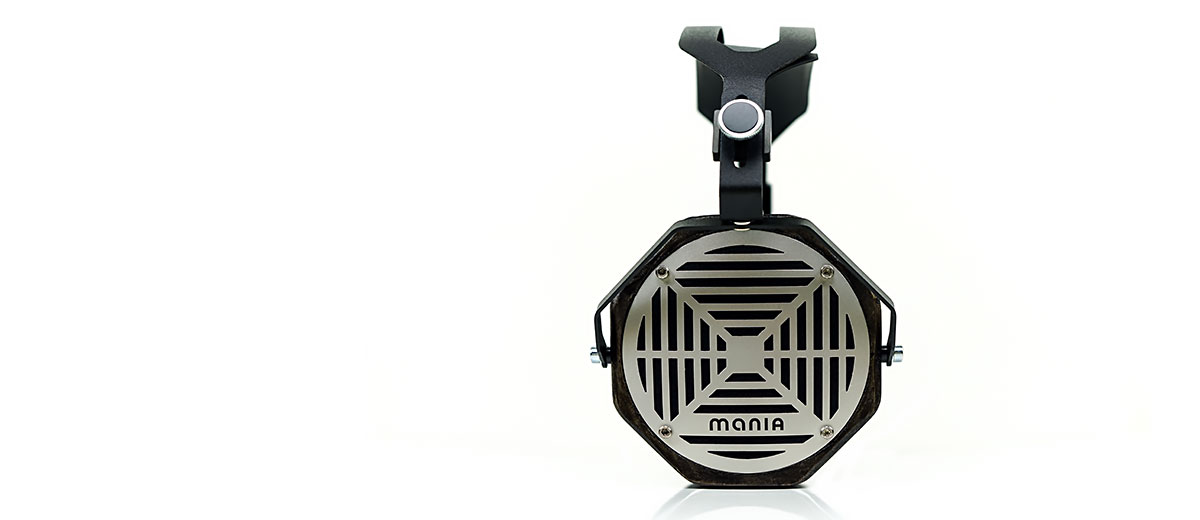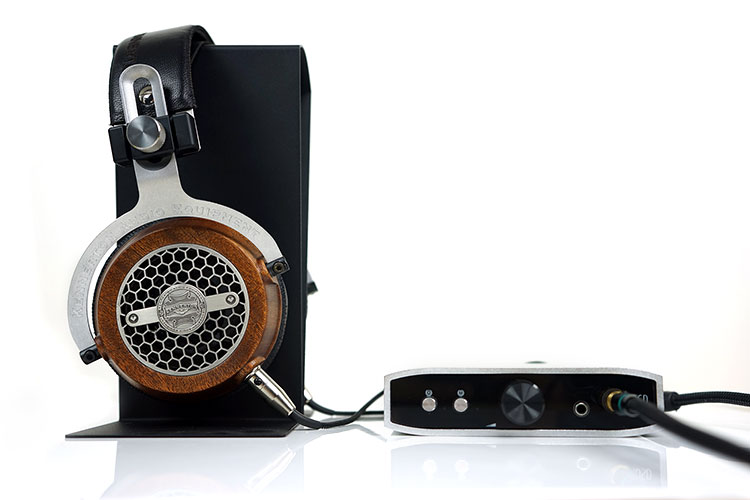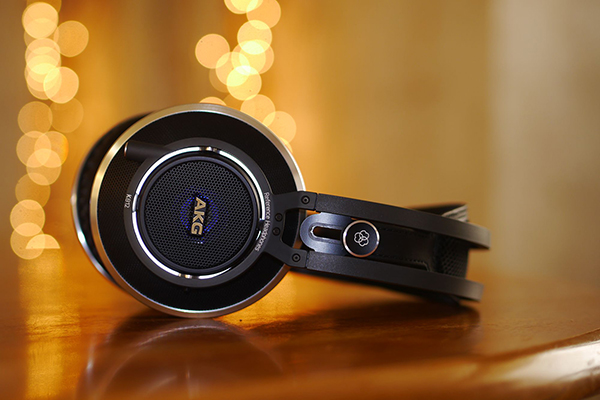Sound Impressions
Summary
The Mania is close to but not quite a V-shaped musical presentation. Overall, it delivers a slightly dark tonality with plenty of low-end warmth and a forward lower treble presence. The Mania’s response is focused on a mid-bass elevation around 70-100Hz which is largely responsible for that warmth. It also has a boosted lower-treble around 4-6k that will deliver a lively clean sounding contrast to that warmth.
The lower treble boosting stops just shy of being a 7k peak so its top-end is forward sounding, perhaps lacking a little in body but it does avoid sounding harsh or sibilant. Upper treble does not extend that far so it lacks a little in terms of sparkle and air, hence that darkish tonality mentioned in the offing.
Midrange Dip
The Mania’s FR has a decidedly dipped midrange from around 800-900Hz right up to 4k. This will have the effect of pushing back some of its instrumental presence and importantly mid to higher scale pitched vocal dynamics. Lower pitched instruments, grunts, and power metal growls will be further forward if they are sitting on the lowest end of the vocal scale at around 500-800Hz.
At the same time, when instrumental energy is stripped away, both male and female vocals have a fairly liquid and smooth tonality. This is not an edgy sibilant vocal presence and the Mania does really well with acoustical or light jazz tracks where voices can breathe and take center stage.
Harmonic Balance
The Mania’s harmonic balance pulls primarily from 70-400Hz for even-harmonic warmth and then again a 4-6k treble boost for some of its upper harmonic order. There is only about 1-2dB peak between the two so the overall presentation can sound quite nicely balanced with a lively contrast. Synth Wave tracks with their swirling synth arrangements can sound quite impressive with the Mania’s tuning.
The dipped midrange does tend to also rob a little substance and texture from some higher-pitched instruments which can leave them a touch lean sounding. However, this is where the upper treble attenuation works in the Mania’s favor as it prevents a lot of potential sharp partial overtones from creeping into the Mania’s instrumental timbre and making them from sounding overly fatiguing.
Lower-mids instrumental timbre has the better body and harmonic balance for me. Anything pitching from 500-800Hz such as bass or rhythm guitar will get a healthy injection of warmth from its elevated mid-bass response.
The Mania’s attack is otherwise quite solid. There is nothing edgy or overly metallic sounding in the presentation. The decay is actually quite nice also. This is a slightly slow release which is consistent with a good large dynamic driver
Power
The Mania rolls off a little too early for me at around 60-70Hz. This attenuation robs it of a level of power and sub-bass rumble I think is necessary for this type of tuning. It is punchy to a degree, however, the fundamentals underpinning elements in rock music that require power such as kick drums lack some bite.
EQ’ing the 30-70Hz area of the Mania does bring out more sub-bass presence and some additional soundstage depth but I wouldn’t push it too hard. Anything more than around 5-6dB and you start to get a faint whiff of distortion and a loss of definition.
Daniel Deluxe’s Blood Magic track is an excellent one to test out the difference between the Mania’s low-end with and without EQ. Without EQ it sounds way too shallow but still fairly punchy. With EQ there is a welcome element of physicality to the low-end response plus some additional depth to its staging that the brooding Blood Magic low-end absolutely requires.
The Mania fares much better for trance and the rather rapid BPM sequencing which relies less on power and more on the punch. The Mania seems to come into its own when required to do that with old standards such as Neurotrance Adventures by Jam and Spoon where gut-wrenching power is not a requirement.
Staging
The Mania staging has a little more mid-bass and lower-mids forwardness with mid-to-higher pitched vocals sitting further back. There is some reasonable depth and height to the soundstage but it just lacks a little presence at either end in terms of power and sparkle.
The lower treble forwardness will create a perception of good detail and there is enough openness and width for instrumental separation and clarity on the Mania to sound pretty solid, especially with stripped down arrangements.
Matchability
Efficiency
The Mania is rated at 80Ω so it does not need a huge amount of power. However, this is a headphone pitched for desktop setups. Erzetich has admitted as much in the choice of cable which is a desktop length and terminated with a quarter jack (balanced XLR cable optional).
Having said all that if you have a quarter jack to 3.5mm termination the Mania performance from portable sources is quite good in terms of timbre which retains a fairly warm and slightly dark sound. Out of an LG G6, the volume is ok actually and there is no need to go full whack to get to a suitable loudness level. What you do miss is a little bit of weight and micro-detail from the superior dynamic range that you can get with good desktop amplification or even powerful DAPs such as the Questyle QP2R and the iBasso DX200 with AMP 1.
Scaling & Synergy
Once you switch over to a dedicated desktop amp such as an Auris HA-2SE or Schiit’s Mjolnir the Mania really starts to open up and perform at optimal levels. I must emphasize though this is not a power hungry headphone, just one that sounds a lot better with higher quality amplification.
Tonal Preference
Given its musical tonal balance and the pronounced elevation at 7k, I would advise going for an amp and source that is either very accurate and neutral or slightly on the soft and smooth side like a tube amp. In doing so you retain good bass/treble contrast but avoid having it sound too peaky and sibilant.
Amping Preferences
More aggressive solid-state amps such as the Schiit Mjolnir (MK1 plugged into Gungnir) brought in some excellent low-end PRaT but tended to emphasize the 7k peak more than smoother sweeter sounding amps such as the Xi Audio Formula S and the Auris HA-2SE. A better solid-state pairing with the Mania was the Violectric V281 (also using a Gungnir source) which delivered a little more body than the Mjolnir, retained that PRaT from the Mjolnir but delivered a smoother top-end performance.
Both the Formula S and Auris HA-2SE amps were using either the Chord Qutest or the Hugo 2 as sources which I felt was the best blend of detail and tonal balance for the Mania during our review testing.
Select Comparisons
Kennerton Vali
$990
Pitch
As far as I can see this is the most likely competitor to the Mania in both form and function. Both are aiming for a very similar custom in terms of build quality with their industrial/wood aesthetic construction and screw adjustable headband. Both have a similar price point with the Vali the slightly cheaper of the two by around $100 and yes, both are coming from Eastern European companies (if that matters to some).
Materials & Fitting
The choice of wood and finish differ though. The Mania is much rougher (by design) looking and perhaps the more authentic in terms of looking like a piece of wood. The darker hue of the Linden wood delivers a slightly more industrial look compared to the more refined milled Peruvian walnut finish of the Vali.
Outside of the metal elements, the other key difference is the choice of headband and pad materials. Erzetich deliberately avoids the use of animal-sourced materials and instead opt for a leatherette and rubber finish. Kennerton uses lambskin and traditional leather for their pads and headband. A higher quality of material possibly but the big problem is the fit on the Vali. It is simply too long for my head and pushes right down on my ears. despite being 10g heavier, the Mania has the better pressure balance and feels much more comfortable on my head.
Drivers
The two headphones also use similar sized dynamic drivers at 50mm. However, they differ in design with the Vali using a composite paper cone driver shielded in a laminated multi-layered film and the Mania opting for a titanium coated diaphragm.
Performance
The Vali is the slightly easier of the two in terms of amplification and sensitivity. It is rated at 32Ω compared to the Mania’s 80Ω. The Vali’s sensitivity rating is rated at 100dB and whilst the Mania is not officially rated for sensitivity it does sound a little quieter out of similar amps so we presume the dB rating is sub-100Ω.
Tonally, these two headphones are quite different and here, outside of the fitting issues, is where I think preference will play a big role. The Mania is much more u-shaped, possible even V-shaped with a much flatter 800Hz to 4k response in comparison to is mid-bass and lower treble emphasis. The Vali has a more pronounced 500Hz to 1k bump to bring vocals much further forward than the Mania so they have a lot more presence and clarity but also deliver a slightly more intimate soundstage than the Mania as a result.
The Vali also has a boosted 3-4k range for percussion presence and bite compared to the muted 3-4k response of the Mania. Whilst the Vali has some slight boosting in the 5-7k region it does show a little less treble energy and emphasis than the Mania. Both have an attenuated upper treble presence and lean slightly to the dark side as a result.
Both headphones have a fair degree of mid-bass warmth and punch, however, the Vali sub-bass response has slightly more presence and power. The Mania rolls off a little quicker than the Vali beyond 70Hz though to be fair the Vali is not a huge sub-bass monster either. Both are tuned to be punchy rather than rumbly with endless depth.
AKG K812 PRO
$1499
Technical
Srp of the K812 is higher but street price these days has it almost the same dollar price (Amazon) as the Mania. It also houses a dynamic driver though marginally bigger at 53mm. This is AKG’s flagship headphone and construction wise it shows.
Comfort Levels
Whilst the Mania is comfortable, unique looking with an industrial feel to it, the K812 is lighter, more integrated looking with a very unique earpad structure. The pads on the K812 are some of the best I have encountered to date on a circumaural headphone.
They rely more on inner cavity shaping to go over and close around the ear. The net result is a lighter smaller pad yet still big enough to not just clear your ear but create a remarkably steady fit. The Mania leatherette pads are a little thicker and bigger than the K812 versions. They also clear the ears quite well. The thickness offsets the greater clamping of the Mania to create a comfy fit. The K812 has much less clamping power and is the lighter of the two headphones so it has much less pressure balance concerns.
Cables
The Mania has the more flexible cable solution. Mini-xlr is the more popular connector in the aftermarket cable world and you can revert to balanced versions if you choose to do so. The AKG K812 has a 3-pin lemo push-pull single-sided connector with a trace wire solution for connecting the two sides which is something I find less than ideal. Balancing is difficult with the type of cable connector and trace wire can be broken. The supplied cable with the K812 is less stiff and has lower microphonics than the Mania stock cable.
Performance
The K812 is rated at 36Ω with a sensitivity rating of 110dB. This is an easy to drive headphone with good performance out of both DAP and desktop amp. By contrast, the Mania does need more power and volume to attain similar listening levels. That being said the Mania sounds more than ok out of good quality DAPs so I would not rate it as inefficient in comparison, just not quite as sensitive.
Tonality
Both headphones are on the fairly musical side with a warmish elevated mid-bass response but for me, the AKG K812 errs towards being the brighter sounding of the two because of its more aggressive treble.
Treble
The Mania has a 5-7k that can ‘zing’ a little but mostly just lacks a little bit of body rather than deliver a hard sibilant experience. The K812 has a more sustained treble elevation right up to 10k that adds some additional sparkle over the Mania. It will sound the airier and brighter of the two, however, it can also exhibit a little bit of glare and odd harmonic dominance on percussion and vocal passages. It is the more articulate of the two headphones with the better perception of detail but also a little less forgiving of the two.
Mids
The mids on the K812 are characterized by a 2-3k peak whereas the Mania is much flatter and slightly veiled sounding by comparison. The K812 vocals, depending on the pitch, can sound a lot further forward and quite vivid. However, they can also get more sibilant and edgy whereas the Mania vocals are much smoother when instrumentals are stripped away. I just wish the Mania vocal performance has more presence on busier rock and pop numbers where they tend to get pushed back in favor of that mid-bass and lower-mids warmth.
Bass
Speaking of mid-bass warmth both have it but the K812 has slightly less and also attenuates from around 70Hz downwards. Neither is going to give you a solid sub-bass rumble but the Mania does seem the more physical and denser of the two low-end performances.
Our Verdict
The Erzetich Mania reminds me a little of the Grado and Kennerton experience. I believe a lot of the tuning is done through listening as well as measurements so they produce quite a unique sound to go along with their very striking visual appeal.
The price point, however, is going to be a tougher pitch. It is very competitive at the $1k level with a lot of demanding headphone customers. The Sennheiser HD800 street price is almost at the same level as is our compared headphone, the AKG K812. There is a lot of dynamic driver open back headphone choices out there right now.
In its favor, the looks will pull a lot of people in who are fascinated by raw striking designs and wood materials. The comfort levels are incredibly good for their weight, much better than the Vali. However, the presentation is more musical than reference, more colored than neutral and more macro than micro. That midrange dip and slight vocal veil means the Mania can sound less than revealing for rock as the warmed up mid-bass and lower mids take center stage.
However, they do come into their own with a very smooth and inviting tone with stripped down acoustics and vocal-centric music. They do not need a ton of power but do deliver some improved dynamic range with good desktop amping.
It is going to a preference thing for the Mania in terms of sound and genre-suitability. For those after a Kennerton Vali vibe, try these also and see what you think. They do provide a viable alternative.
Erzetich Mania Specifications
- Impedance: 80Ω
- Driver: Dynamic 50mm, titanium
- Cup system: Semi-open
- Weight: 460 g




